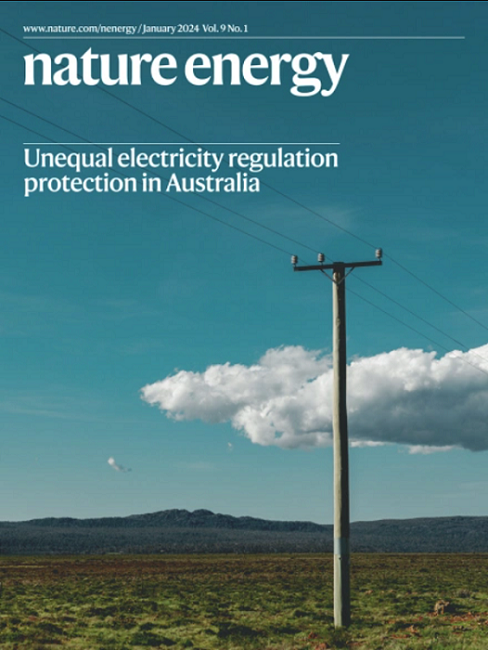Contamination control
IF 60.1
1区 材料科学
Q1 ENERGY & FUELS
引用次数: 0
污染控制
隧道氧化物钝化接触(TOPCon)硅太阳能电池由于其高性能和具有竞争力的制造成本,在光伏产业中越来越受到关注。然而,考虑到这项技术相对较新的发展,其在操作条件下的可靠性尚未完全了解。特别是,据报道,TOPCon太阳能电池容易受到制造或环境压力产生的污染物的影响。例如,从玻璃基板上扩散出来的钠已经被证明会降低前面的金属接触。在一项学术与工业合作中,Tong Hongbo, Xinyuan Wu, Zhenguo Li, Bram Hoex及其来自中国和澳大利亚的同事证明,该设备的背面也容易受到钠腐蚀和扩散到硅层中。为了模拟污染,研究人员在85°C和85%相对湿度的加速测试条件下,在TOPCon太阳能电池的前部和后部喷洒含有钠盐的溶液。虽然在两面都可以观察到降解,但在背面表面的元素变化和化学反应更为明显,因为它缺乏正面存在的坚固的化学钝化层。这些反应导致缺陷的形成和钠离子扩散到太阳能电池中。
本文章由计算机程序翻译,如有差异,请以英文原文为准。
求助全文
约1分钟内获得全文
求助全文
来源期刊

Nature Energy
Energy-Energy Engineering and Power Technology
CiteScore
75.10
自引率
1.10%
发文量
193
期刊介绍:
Nature Energy is a monthly, online-only journal committed to showcasing the most impactful research on energy, covering everything from its generation and distribution to the societal implications of energy technologies and policies.
With a focus on exploring all facets of the ongoing energy discourse, Nature Energy delves into topics such as energy generation, storage, distribution, management, and the societal impacts of energy technologies and policies. Emphasizing studies that push the boundaries of knowledge and contribute to the development of next-generation solutions, the journal serves as a platform for the exchange of ideas among stakeholders at the forefront of the energy sector.
Maintaining the hallmark standards of the Nature brand, Nature Energy boasts a dedicated team of professional editors, a rigorous peer-review process, meticulous copy-editing and production, rapid publication times, and editorial independence.
In addition to original research articles, Nature Energy also publishes a range of content types, including Comments, Perspectives, Reviews, News & Views, Features, and Correspondence, covering a diverse array of disciplines relevant to the field of energy.
 求助内容:
求助内容: 应助结果提醒方式:
应助结果提醒方式:


